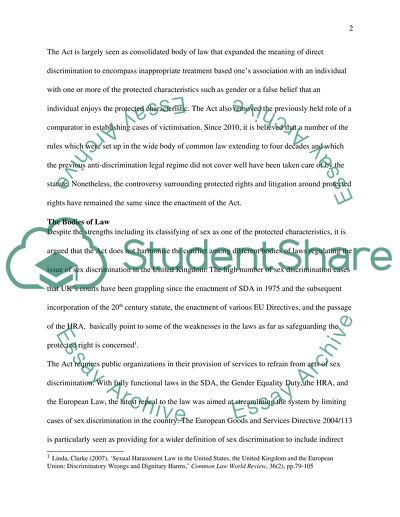Cite this document
(“Does the English Legal System do enough to address inequalities Essay”, n.d.)
Does the English Legal System do enough to address inequalities Essay. Retrieved from https://studentshare.org/law/1644435-does-the-english-legal-system-do-enough-to-address-inequalities-between-individuals-and-groups-your-answer-should-focus-on-1-or-2-of-the-protected-characteristics-under-the-equality-act-2010-my-protected-characteristic-is-gender
Does the English Legal System do enough to address inequalities Essay. Retrieved from https://studentshare.org/law/1644435-does-the-english-legal-system-do-enough-to-address-inequalities-between-individuals-and-groups-your-answer-should-focus-on-1-or-2-of-the-protected-characteristics-under-the-equality-act-2010-my-protected-characteristic-is-gender
(Does the English Legal System Do Enough to Address Inequalities Essay)
Does the English Legal System Do Enough to Address Inequalities Essay. https://studentshare.org/law/1644435-does-the-english-legal-system-do-enough-to-address-inequalities-between-individuals-and-groups-your-answer-should-focus-on-1-or-2-of-the-protected-characteristics-under-the-equality-act-2010-my-protected-characteristic-is-gender.
Does the English Legal System Do Enough to Address Inequalities Essay. https://studentshare.org/law/1644435-does-the-english-legal-system-do-enough-to-address-inequalities-between-individuals-and-groups-your-answer-should-focus-on-1-or-2-of-the-protected-characteristics-under-the-equality-act-2010-my-protected-characteristic-is-gender.
“Does the English Legal System Do Enough to Address Inequalities Essay”, n.d. https://studentshare.org/law/1644435-does-the-english-legal-system-do-enough-to-address-inequalities-between-individuals-and-groups-your-answer-should-focus-on-1-or-2-of-the-protected-characteristics-under-the-equality-act-2010-my-protected-characteristic-is-gender.


